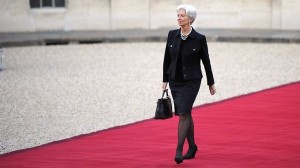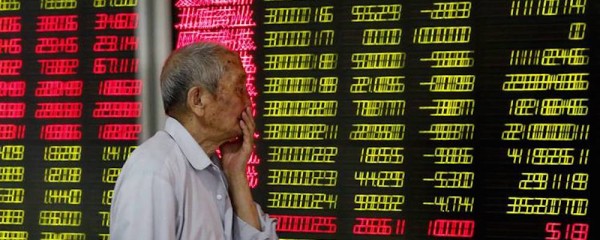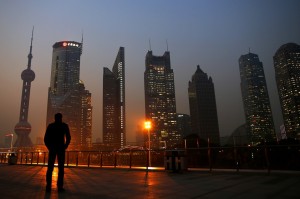30
Jul 2015
CHINA’S ECONOMY NOW
Buenos! It’s been super sultry here in China during the summer and the heat is added up by the current unstable market condition. So today, I decided to choose this current hot issue in China: China’s Economy Now. I gathered the information from some sources and happy reading …..
With industrial profits sliding, factory activity retreating and the stock market on wild swings, China’s economic future seems blurry.
However, positive changes in the fundamentals can not be ignored and are helping the economy embark on a path of stabilizing, analysts say.
China’s economy expanded 7% in the second quarter of 2015, the same as in the first quarter.
Recent statistics show profits at major Chinese industrial firms dropped in June and an indicator on manufacturing activities fell in July to the lowest level since last April.
Wild ups and downs in the country’s stock market add to uncertainties. The benchmark Shanghai Composite Index recorded the sharpest daily drop since Feb. 27, 2007, an 8.48% plunge, on Monday. It snapped back with a 3.44% rebound on Wednesday.
Despite those unnerving figures, an official with the country’s top economic planner said the fundamentals of China’s economy are stabilizing and improving.
Industrial output has continued to recover, new types of businesses have flourished, and the service sector has become an increasing contributor to the national growth, said Li Yunqing, an official at economic operation department of the National Development and Reform Commission.
Surpassing market anticipation, China’s industrial output climbed by 6.8% from a year ago for a third straight month of increases in June. (click here to see the IMF Chief’s statement)
 Christine Lagarde – Chief of IMF
Christine Lagarde – Chief of IMF
“If we look at the structure of the economy and the quality of growth, the results are more encouraging,” Li said.
For example, six major energy-intensive industries, such as steel and building materials, slowed down significantly in the first half, actually mitigating some growth of emerging industries, he said.
High-tech industries’ output rose 10.5% year on year in the first half, with industrial robots surging 130% and railway locomotives jumping 91%.
While fixed-asset investment continued to soften, its structure is shifting to consumption-linked and emerging industries.
Six major energy-intensive industries recorded a total investment growth of 7.5% year on year in the first half, 2.2 percentage points below the overall investment in manufacturing.
Meanwhile, industries like computer and telecommunications equipment, information and software, transport, postal service, cultural and sports goods all posted an investment growth above 20 percent year on year.
Property investment, the old pillar of investment and growth, is also expected to recover in the second half, with house sales warming up. Fewer cities saw new home prices drop for the fourth consecutive month in June.
The pressure on home prices will continue to ease gradually through 2015, global rating agency Moody’s said in a research note.
RECOVERY EXPECTED, PRESSURE REMAINS
The trend that China’s economy is stabilizing has become more obvious, Jia Kang, a renowned fiscal science researcher at the Ministry of Finance, and his fellow researchers wrote in an article published Wednesday.
As interest rates come down and monetary supply increases, Chinese companies will see the cost of investment brought down effectively and the nation’s fixed-asset investment growth will hopefully rebound in the fourth quarter, according to the article.
Retail growth has basically touched the bottom and will keep stable throughout the year, Jia predicted.
Foreign trade, another growth engine, is likely to return to growth in the second half as global demand improves and de-stocking by companies winds down, he wrote.
China’s economy grew 7% year on year in the second quarter of this year, the same as in the first quarter.
Zhu Haibin, chief economist of J.P. Morgan China, attributed growth in the second quarter to the service sector’s performance. Consumption accounted for 60% of economic growth in the first half, 5.7 percentage points higher than a year ago and almost double the contribution from investment.
“The economic re-balancing from investment to consumption is really happening,” Zhu said in a research note, predicting the economy will continue to pick up in the third quarter.
However, the degree and duration of recovery is challenged by several factors, including hovering industrial overcapacity, long-standing fiscal restraints, and the latest stock market turmoil, according to Zhu.
Stock price corrections may drag down growth in the financial sector and affect some rapidly expanding industries that have benefited from previous bullish runs, Zhu said.
(More on IMF’s Lagarde Says China’s Economy Can Withstand Market Turmoil, click here)
(More reference for China’s Economy, click here)
“The stock market is a device for transferring money from the impatient to the patient – Warren Buffett”
Source : XinHua News, WSJ, and The New York Times
Visit SBE inspection page for more inquiry in doing business in China www.sbeinspection.com
































